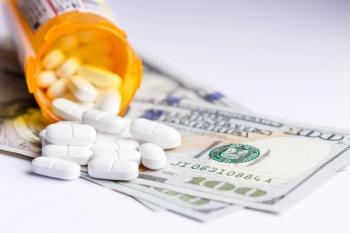
AJPB® Translating Evidence-Based Research Into Value-Based Decisions®
- Spring 2009
- Volume 1
- Issue 1
Factors Affecting Pharmacy Trends in 2008
The increase in generic medications, changes in utilization patterns, and the significant decrease in the approval of new molecular entities have slowed 2008 pharmacy trends to historically low levels.
Growth trends in retail prescription drugs slowed to historically low levels in 2008. We have seen an increase in generic alternatives, changes in utilization patterns, a significantly higher number of black box warnings, and a reduction in the number of significant new drug approvals of new molecular entities (NMEs) over the past 2 years that have set the stage for the single-digit overall growth trends reported by pharmacy benefit managers (PBMs). In the discussion that follows, we will focus on the drivers of pharmacy.
The major PBMs reported 2007 drug trend growth in the single digits—a dramatic shift from the double-digit growth rates recorded in this sector just a few years ago. CVS Caremark, a pharmacy healthcare company, forecasts continued single-digit growth in prescription drug spending in the near-term future (
Figure 1
).
In addition to CVS Caremark reporting a decrease in drug spending, on October 29, 2008, IMS Health published a revised forecast for slower (1%-2%) growth in both 2008 and 2009. Earlier in 2008, IMS had expected growth of 2% to 3%, and they attributed the lower-than-expected growth projections to less-than-expected demand for recently introduced products, continuing patent expirations, fewer new product launches, and a tighter economy. IMS now expects sales of $287 billion to $297 billion in 2008 and $292 billion to $302 billion in 2009.1
METHODS
This is a retrospective study of 377.3 million prescription claims in a computerized database. The study population includes 27.7 million members who are representative of funded and unfunded benefit prescription plans administered by CVS Caremark. The plan sponsors include Medicaid, national and local employers, health plans, managed care organizations, insurance companies, unions, and government agencies located throughout the United States between January 1, 2007, and June 30, 2008. The plan sponsors have average eligibility changes limited to within ±15% period over period.
DRUG TREND COMPONENTS
Drug trend has 3 major components—drug mix, utilization, and cost. Product (drug) mix includes the impact of new drugs and the relative proportion of biotechnologic, brand, and generic drugs in the overall product mix. New drugs are defined as NMEs approved by the US Food and Drug Administration (FDA). Cost is measured by average wholesale price (AWP)—changes between products available in both time periods and ingredient drug cost per day’s supply. Utilization is calculated as the day’s supply per eligible member per year.
Drug Mix
In the trend cohort group, drug mix is a major component of trend. This is mainly due to the relative increase in generic drug availability compared with brand-name products. In recent years, an increase in generic utilization has positively impacted trend for PBM clients. Our analysis of several commonly used generics shows that client drug spending has been reduced by as much as 52.3% through generic substitution.
Table 1
compares the average gross cost per day of several leading brand-name drugs with that of their generic equivalents. The savings can be substantial.
Significantly, the increase in generic substitution has to do partly with the effectiveness of the CVS Caremark utilization management programs and the increased availability of generic equivalents to major blockbuster brand-name drugs that have expired patents. It also is a byproduct of reduced pipeline productivity in the pharmaceutical industry, as evidenced by the declining number of NMEs approved by the FDA in recent years (
Figure 2
).
Eleven NMEs were approved by June 2008; 16 NMEs were approved in all of 2007. In addition to fewer NMEs,2,3 the number of blockbuster drugs (ie, those with sales in excess of $1 billion annually) is decreasing. In 1997, 6 drugs were considered blockbusters compared with 52 drugs in 2006. In 2007, for the first time, the number of blockbusters fell to 48 drugs. As more blockbusters go off patent and fewer new ones are developed, the share of sales attributable to blockbuster molecules will likely decline even further.4
Utilization
Utilization is usually the primary driver of trend as new drugs become available, the population grows older, and new treatment guidelines call for more aggressive management of conditions such as high cholesterol and diabetes. The top therapeutic classes have contributed more than 1% to the overall utilization trend (
Table 2
). These classes include lipid-lowering agents 3-hydroxy-3-methylglutaryl coenzyme A (HMG-CoA) reductase inhibitors, blood pressure—lowering agents (antihypertensive combinations), gastrointestinal agents (proton pump inhibitors), and thyroid hormone replacement therapy.
The top therapeutic classes that contributed to the lowering of utilization trend did so in response to movement from prescription to nonprescription status (eg, Zyrtec’s impact on the cough/cold and nonsedating antihistamine classes) and negative drug studies (eg, Avandia’s impact on insulin-sensitizing agents, Zetia/Vytorin’s impact on antihyperlipidemic combinations and intestinal cholesterol absorption inhibitors).
Utilization growth continues to be tempered by safety concerns, as seen with the impact of Avandia on the insulin-sensitizing class, which had a 24.3% decrease in utilization. The impact of this class on the overall utilization trend was −0.22% (Table 2).
Class and product decline may be directly tied to safety concerns and can be seen in the dramatic and immediate impact that negative study results have had on the insulin-sensitizing agents. Comprised of just 2 drugs, Actos and Avandia, this class enjoyed an eighth-place ranking in our year-to-date April 2007 Book of Business, at 2.0% of total gross cost. Actos (10.4%) and Avandia (8.9%) combined to hold a 19.3% share of the oral antidiabetic drug market in April.
On May 21, 2007, a meta-analysis of Avandia studies was published in the New England Journal of Medicine showing a statistically significant increase in the risk of myocardial infarction and an increased risk of death from cardiovascular causes with borderline significance.5 The FDA subsequently required that Avandia franchise (Avandia, Avandamet, and Avandaryl) labeling include a black box warning emphasizing the increased risk of heart failure.6 In addition, there was a separate expansion later to the Avandia label that mentioned only an increased risk of other cardiac events.
Another example of the impact negative study results or efficacy questions can have on utilization is the study data released in mid-January 2008 suggesting that the Merck/Schering-Plough joint-venture drug Vytorin (ezetimibe/simvastatin) was no more effective on plaque buildup in the carotid artery than its statin constituent, Zocor (simvastatin), which is available as a less expensive generic on its own. IMS recently reported that total monthly prescriptions for the Vytorin/Zetia (ezetimibe) franchise had fallen by 39% from January to November. In the CVS Caremark Book of Business, we saw Vytorin’s share of the market for lipid-lowering drugs fall from 10.9% in January 2006 to 8.6% in June 2008 (
Figure 3
).
In addition, the utilization trend for the cold/cough/allergy combination class decreased nearly 21% because of the delayed flu season and the collapse in prescription sales of nonsedating antihistamines, precipitated by the conversion to nonprescription status of Pfizer’s Zyrtec in January 2008. The nonsedating antihistamines were the 16th-ranked class of drugs in our October 2007 Book of Business, representing 1.5% of total gross cost. By March 2008, the class had fallen entirely from our top 25 drugs. Nonprescription Zyrtec had a negative impact of nearly −1.0% on overall utilization in our Book of Business for the year (Table 2). By June 2008, the nonsedating antihistamine class utilization trend decreased 36.4% (
Figure 4
).
The number of black box warnings issued by the FDA—the strongest warning the agency can require—has grown substantially every year since 2003 (
Figure 5
).
A key driver to utilization continues to be the impact of influenza. The influenza season in 2006-2007 was similar to that in 2007-2008; however, the peak in the latter season was significantly later (February 2008) than the peak in the previous season (
Figure 6
).
The delay in the 2007-2008 flu season and lower utilization of flu-related drugs in early 2008 contributed to the lower trend in 2008.
Cost
The major impact on trend was the price component. The major driver of price is the increase in AWP inflation for brand drugs. In 2008, AWP inflation was 5.7%, led by brand products at 8.7% and a decrease of −0.5% for generics7 (
Figure 7
).
Year over year, the cost of pharmaceutical drugs increases because of inflation. However, this can be moderated by product competition and increasing generic availability. Changes in distribution channels between mail and retail also can impact the pricing component of trend.
Diabetes Treatment: Cause for Concern
Our internal data sources allow us to estimate the number of people with diabetes in the United States. Combining CVS Caremark data with information from the Centers for Disease Control and Prevention National Health Survey (15% not medicated) and the American Diabetes Association (30% estimated undiagnosed), we can get a complete picture of the state of the diabetes population using the PBM population as a backdrop. We define antidiabetic therapies in this analysis as insulins and oral hypoglycemics, and medications like statins and angiotensin-converting enzyme inhibitors for the prevention of complications (
Figure 8
).
It is surprising that only 17% of people with diabetes receive appropriate therapies and have at least 80% adherence to these medications. The potential risk of adverse events for the remaining 83% of the diabetes population should concern the healthcare industry.
FUTURE TREND
The current single-digit growth rate is more than likely to continue given the significant slowdown in the economy and the increased number of underinsured people looking for low-cost alternative generics. In addition, the decrease in new innovative drugs to treat chronic conditions also contributes to the decrease in cost and utilization. However, the aging population, the increase in obesity and diabetes, and the decline in patients’ and employers’ investment in proactive health improvement may reverse the single-digit trend.
CONCLUSION
Our finding of reduced growth in prescription drug spending is confirmed in the secondary literature; a newly published Centers for Medicare & Medicaid Services report found that retail prescription drug spending grew by 4.9% in 2007, down from 8.6% in 2006. The slowing growth is seen as being the result of several factors, including continued growth in the generic dispensing rate, slower growth in prescription drug prices, and rising consumer anxiety about drug safety issues.8
Possible drivers of spending growth include broader treatment guidelines, which are likely to underlie higher utilization of specific therapeutic classes (eg, agents for cholesterol and hypertension). Expanding indications also could result in increased utilization; this trend could be particularly expensive when it involves higher-priced specialty drugs.9
Articles in this issue
over 15 years ago
Examining Part D Beneficiaries' Medication Use in the Doughnut Holeover 15 years ago
A New Alliance: Message From the PTS Presidentalmost 16 years ago
Comparative Effectiveness Research: Stimulus for Better Patient Carealmost 16 years ago
A Word of Welcomeover 16 years ago
The Value-Based Model: Health Management Worth ExploringNewsletter
Stay informed on drug updates, treatment guidelines, and pharmacy practice trends—subscribe to Pharmacy Times for weekly clinical insights.












































































































































































































